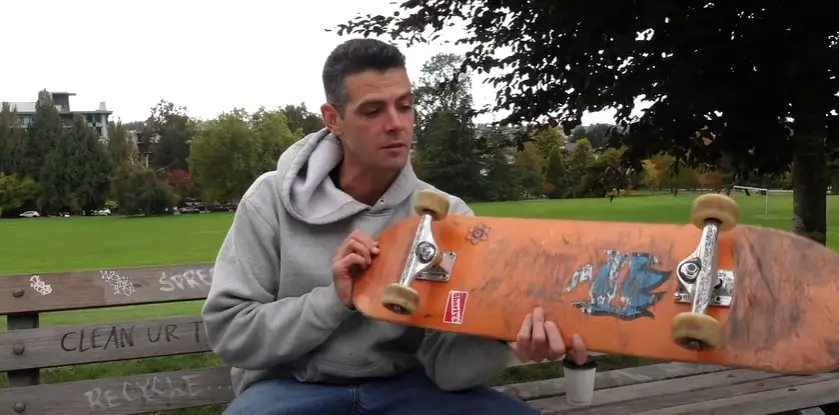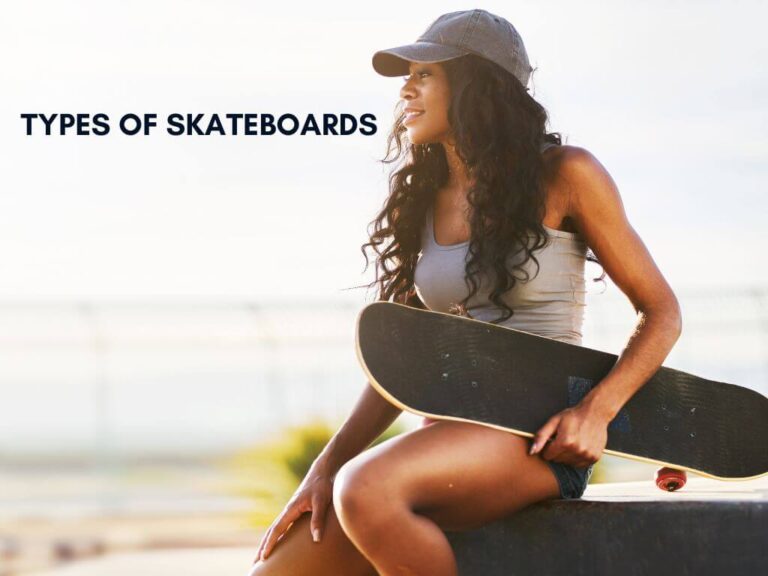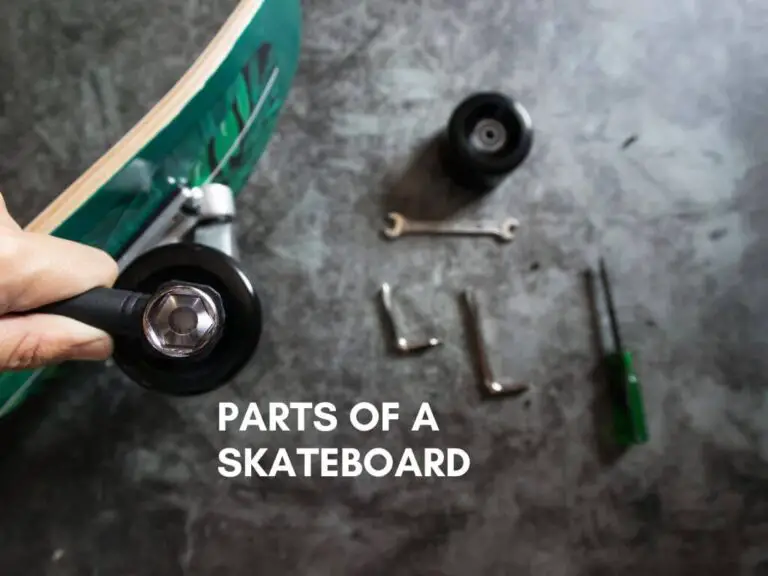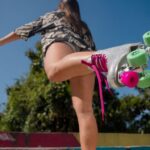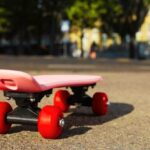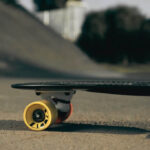When it comes to skateboarding, the question “Are bigger wheels harder to ollie?” has sparked endless debates among skaters of all levels. Whether you’re a beginner trying to master your first trick or a seasoned pro looking to fine-tune your setup, the size of your wheels can make a huge difference in your performance. But does going bigger really make pulling off an ollie more challenging?
In this article, we’ll dive into the science, mechanics, and real-world experiences to uncover the truth about wheel size and its impact on one of skateboarding’s most iconic tricks. Get ready to roll with the facts and find out if bigger wheels are holding you back—or helping you soar!
Understanding the Ollie
The ollie is the most fundamental and important trick in skateboarding. It is the foundation for all other tricks, and it is essential for learning how to navigate obstacles and skate on ramps.
The ollie is a jumping trick that involves popping the tail of the skateboard down to the ground and then sliding your front foot up the board to level it out in the air. It is a complex trick that requires coordination, timing, and balance, but it is also very rewarding to learn.
The Physics of the Ollie
The ollie is based on the principle of Newton’s third law of motion: for every action, there is an equal and opposite reaction. When you pop the tail of the skateboard down to the ground, the ground pushes back up on the board, launching it into the air.
At the same time, you are sliding your front foot up the board. This helps to level out the board in the air and gives you control over the trick.
The Mechanics of the Ollie
To perform an ollie, you will need to:
- Place your front foot in the middle of the board and your back foot on the tail.
- Crouch down and bend your knees.
- Pop the tail of the board down to the ground and jump up off your back foot.
- Slide your front foot up the board towards the nose.
- Level out the board in the air and land with both feet back on the board.
Tips for Learning the Ollie
Here are a few tips for learning the ollie:

- Start by practicing on flat ground.
- Make sure your foot placement is correct.
- Pop the tail and jump up at the same time.
- Slide your front foot up the board smoothly.
- Level out the board in the air and land with your knees bent.
Variations of the Ollie
Once you have mastered the basic ollie, you can start to learn variations of the trick. Some popular variations include:
- Nollie: The nollie is an ollie performed with the front foot on the tail and the back foot on the nose.
- Switch ollie: The switch ollie is an ollie performed with your opposite foot in front.
- Ollie pop shove-it: The ollie pop shove-it is an ollie combined with a pop shove-it.
- Ollie north: The ollie north is an ollie combined with a north pole grab.
The ollie is a fundamental skateboarding trick that is essential for learning how to skate on all types of terrain. It is a complex trick that requires coordination, timing, and balance, but it is also very rewarding to learn.
If you are interested in learning how to ollie, there are many resources available online and in skateboarding magazines. You can also find skate schools and camps that offer lessons on how to ollie and other skateboarding tricks.
Why are bigger wheels harder to ollie?
Bigger wheels are heavier, more likely to rub against the deck, and have more momentum than smaller wheels. All of these factors can make it more difficult to ollie with bigger wheels.
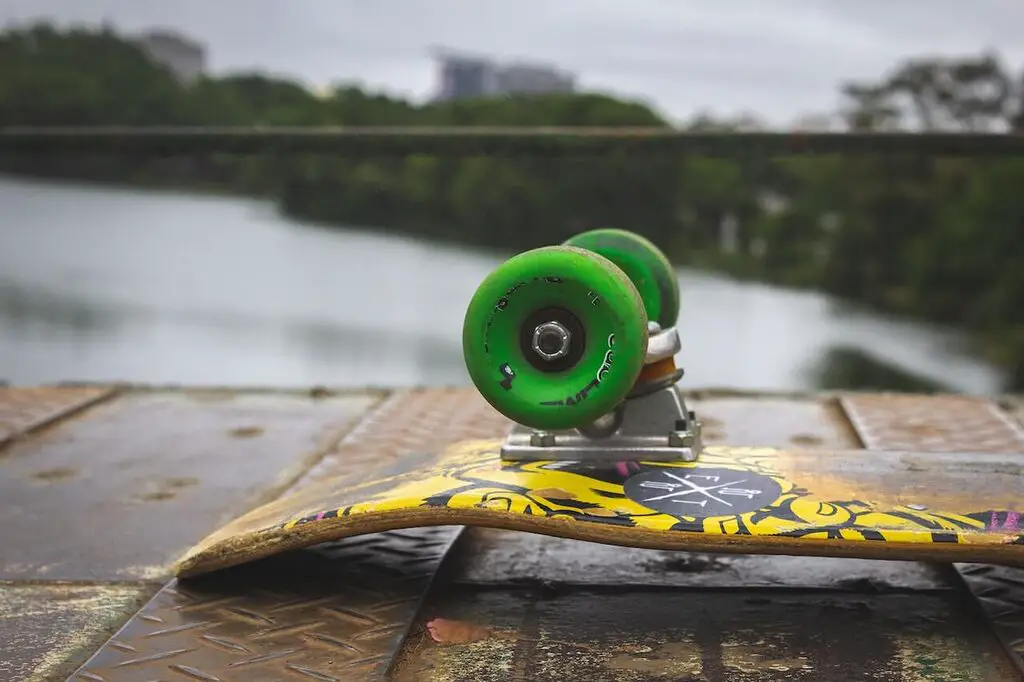
More weight
The weight of your wheels is an important factor to consider when ollieing. Bigger wheels are heavier than smaller wheels, which can make it more difficult to pop and level out the board. When you ollie, you need to be able to pop the tail of the board down quickly and then jump up and level out the board. If your wheels are too heavy, it can be more difficult to pop the board and generate the necessary momentum.
More wheelbite
Wheelbite is a common problem that can occur when skating with bigger wheels. Wheelbite happens when the wheels rub against the deck, which can cause the board to stop suddenly and throw you off. Wheelbite is more likely to occur with bigger wheels because they are closer to the deck. If you are having trouble with wheelbite, you can try raising your trucks or using smaller wheels.
More momentum
Bigger wheels have more momentum than smaller wheels. This means that they will keep rolling even when you are not pushing. This can make it more difficult to land the ollie cleanly because you have to control more momentum. When landing an ollie, you need to be able to slow down the board and land on it with your feet over the trucks. If the board has too much momentum, it can be difficult to slow down and land cleanly.
Tips for ollieing with bigger wheels
If you are learning to ollie with bigger wheels, there are a few things you can do to make it easier:
- Use hard wheels. Hard wheels have less grip than soft wheels, which can help to reduce wheelbite.
- Raise your trucks. Raising your trucks will create more space between the wheels and the deck, which can help to prevent wheelbite.
- Practice on a smooth surface. A smooth surface will reduce friction and make it easier to pop the board and land the ollie.
- Be patient and persistent. It takes practice to learn to ollie with any size wheels. Don’t get discouraged if you don’t get it right away. Just keep practicing and you will eventually get it.
Olliing with bigger wheels can be more difficult than ollieing with smaller wheels, but it is possible. By following the tips above, you can make it easier to learn to ollie with bigger wheels.
How to ollie with bigger wheels
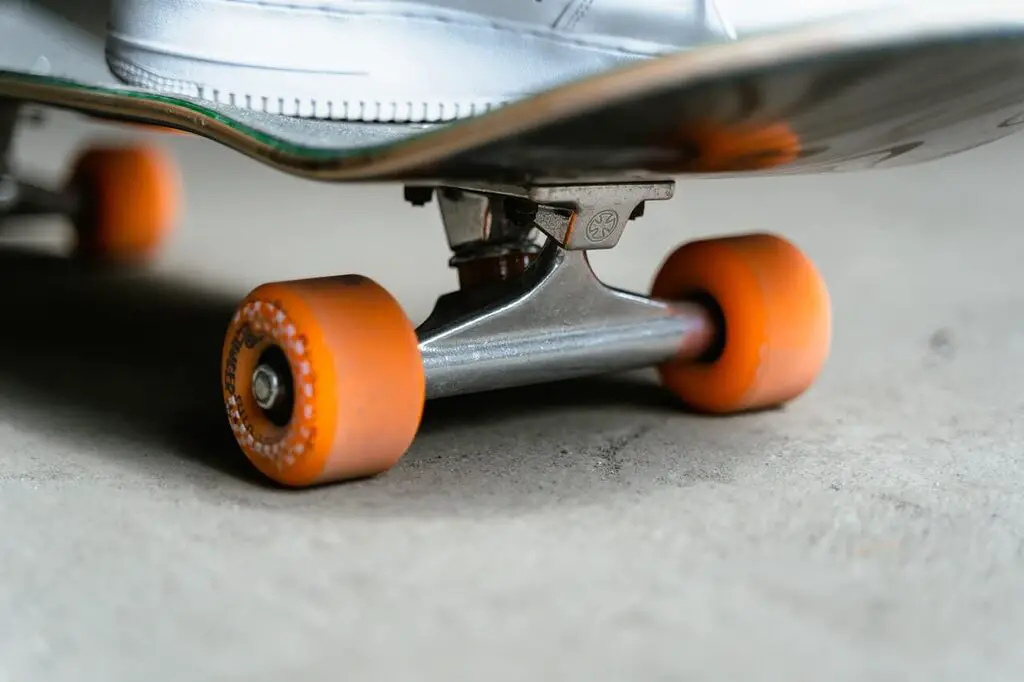
Ollieing with bigger wheels can be a bit more challenging than ollieing with smaller wheels, but it is definitely possible with practice. Here are some tips:
Use hard wheels: Hard wheels will give you more grip and control, which can be helpful when ollieing with bigger wheels. This is because bigger wheels tend to slide more easily than smaller wheels.
Pop the board hard: You will need to pop the board harder with bigger wheels to get it to level out. This is because bigger wheels have more inertia, so it takes more force to get them moving.
Keep your weight centered: It is important to keep your weight centered over the board when ollieing with bigger wheels to prevent wheelbite. Wheelbite occurs when the wheels come into contact with the deck, which can cause the rider to fall. To keep your weight centered, make sure that your shoulders are directly over the board and that you are not leaning forward or backward.
Practice makes perfect: The more you practice, the better you will become at ollieing with bigger wheels. Start by practicing on flat ground, and once you have mastered the basic technique, you can start practicing on ramps and other obstacles.
Here is a more in-depth breakdown of each step:
1. Start in a comfortable stance. Your feet should be shoulder-width apart, with your front foot slightly angled outward. Your weight should be evenly distributed between both feet.
2. Bend your knees and squat down slightly. This will give you the power to pop the board into the air.
3. Pop the board hard with your back foot. Slide your back foot up the tail of the board and snap it down quickly. This will generate the force needed to lift the board into the air.
4. Slide your front foot up the board. As the board rises into the air, slide your front foot up the board towards the nose. This will help you to level out the board and complete the ollie.
5. Land with your knees bent. This will help you to absorb the impact of the landing and prevent you from falling.
With practice, you will be able to ollie with bigger wheels with ease. Just remember to use hard wheels, pop the board hard, keep your weight centered, and practice regularly.
Additional tips:
- Warm up before you start practicing. This will help to prevent injuries.
- Wear a helmet and other protective gear. This is especially important when you are first learning to ollie.
- Find a safe place to practice, such as a skatepark or empty parking lot.
- Be patient and don’t get discouraged. It takes time and practice to learn how to ollie.
Have fun and good luck!
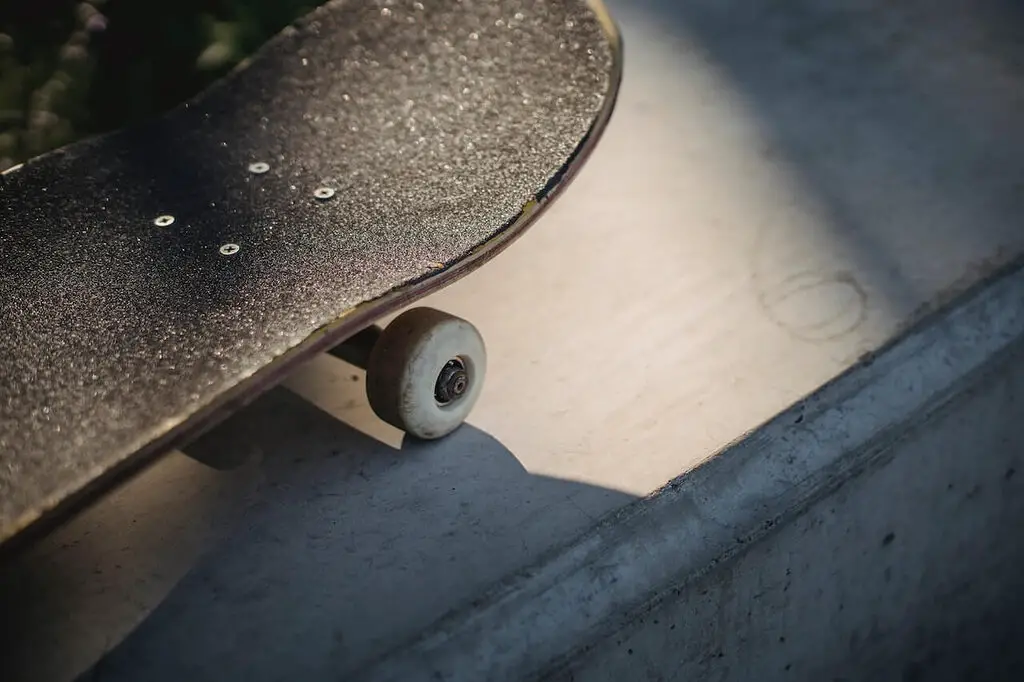
How wheel size affects different aspects of an ollie
The size of your skateboard wheels can have a significant impact on your ollie. Bigger wheels can provide a smoother ride and go faster, but they can also be more difficult to ollie.
Here are some of the ways that wheel size can affect different aspects of an ollie:
Pop
The pop is the initial upward movement of the skateboard. Bigger wheels can make it more difficult to pop the board because they are heavier and have more inertia.
To compensate for this, you may need to use a stiffer deck, harder wheels, or higher trucks. You may also need to adjust your stance and swing your arms more forcefully when popping the board.
Slide
The slide is the movement of your foot up the skateboard deck as you ollie. Bigger wheels can make it more difficult to slide your foot because they are closer to the deck.
To compensate for this, you may need to use a lower deck or softer trucks. You may also need to adjust your stance and slide your foot up the deck more quickly.
Landing
The landing is the final phase of the ollie. Bigger wheels can make it more difficult to land the ollie because they have more momentum.
To compensate for this, you may need to bend your knees more and absorb the impact of the landing with your feet and ankles. You may also need to adjust your stance and land on the board with your feet slightly closer together.
Specific examples:
- Pop: If you are using bigger wheels, you may need to use a stiffer deck, harder wheels, or higher trucks to make it easier to pop the board. You may also need to adjust your stance and swing your arms more forcefully when popping the board.
For example, if you are using 54mm wheels, you may want to try using a 7.75″ deck or higher. You may also want to try using harder wheels, such as 99a or 101a.
- Slide: If you are using bigger wheels, you may need to use a lower deck or softer trucks to make it easier to slide your foot. You may also need to adjust your stance and slide your foot up the deck more quickly.
For example, if you are using 54mm wheels, you may want to try using a 7.5″ deck or lower. You may also want to try using softer trucks, such as 8.5″ or 8.75″.
- Landing: If you are using bigger wheels, you may need to bend your knees more and absorb the impact of the landing with your feet and ankles. You may also need to adjust your stance and land on the board with your feet slightly closer together.
For example, if you are using 54mm wheels, you may want to try landing with your feet slightly closer together than you would if you were using smaller wheels. You may also want to bend your knees more and absorb the impact of the landing with your feet and ankles.
It is important to note that the best wheel size for ollieing depends on your personal preferences and riding style. There is no one-size-fits-all answer.
Conclusion
In skateboarding, the ollie is a fundamental trick that opens the door to a world of possibilities. It allows skaters to conquer obstacles and perform impressive maneuvers. We’ve seen that wheel size affects ollies, with smaller wheels providing better pop and control.
However, Are Bigger Wheels Harder to Ollie?it’s crucial not to solely rely on skateboard equipment. Experimenting with different wheel sizes and focusing on improving technique is key. So, keep practicing and honing your skills. Embrace the joy of learning and pushing your limits. With dedication and a willingness to explore, you’ll unlock your true skateboarding potential and experience the thrill of mastering the ollie!
FAQ’s
Can I switch between bigger and smaller wheels for different skateboarding styles?
Absolutely! Many skateboarders keep multiple setups with different wheel sizes for various styles of riding. If you enjoy both cruising and technical street tricks, having setups with both bigger and smaller wheels will allow you to enjoy the best of both worlds.
Should beginners use bigger or smaller wheels to learn ollies?
Beginners generally find it easier to learn ollies with smaller wheels because they require less effort to pop. As skills progress, they can experiment with different wheel sizes to find what suits their preferred style of skateboarding.
Are there specific techniques to improve ollies with bigger wheels?
Yes, you can improve your ollies with bigger wheels by adjusting your technique. Focus on exerting more force when popping the tail to compensate for the increased friction. Additionally, work on your timing and body positioning to optimize your ollie height.
Can you do skate tricks with big wheels?
Yes, you can do some skate tricks with big wheels, but it’ll be a bit different than with smaller wheels. Big wheels, like those on cruiser boards or longboards, are great for cruising, carving, and pumping, but their size and softness can make them less ideal for flips, grinds, and slides.

